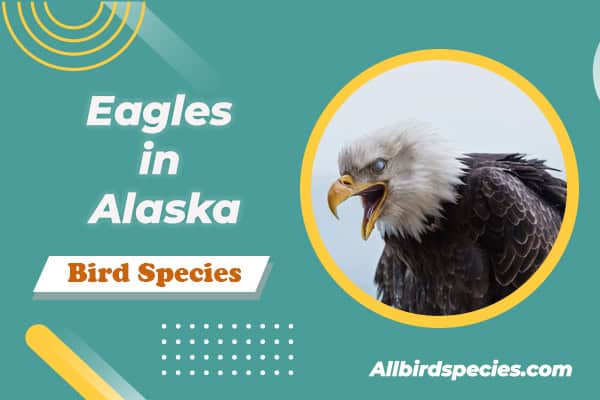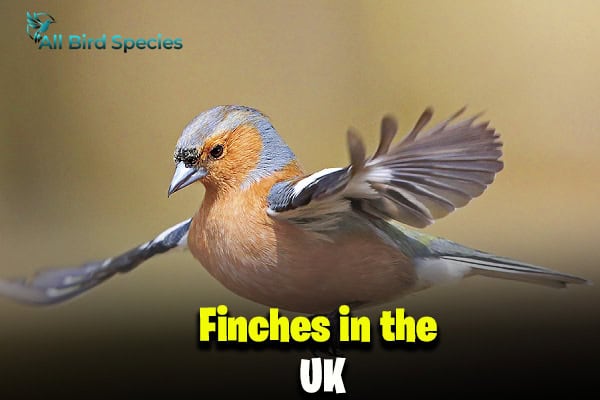11 Types of Owls in Wisconsin (With Pictures)
Did you know Wisconsin is home to 11 different types of owls? This fact shows the state’s rich biodiversity and its diverse habitats. Owls in Wisconsin are a key part of the wildlife that fascinates many people.
This article will cover the different owl species in Wisconsin. You’ll see pictures and learn about their behaviors, habitats, and roles in ecosystems. Let’s explore the world of Wisconsin wildlife and learn about these amazing birds.
Common Owl Species Found In Wisconsin
- Great Horned Owl
- American Barn Owl
- Barred Owl
- Eastern Screech-Owl
- Long-eared Owl
- Great Gray Owl
- Short-eared Owl
- Northern Saw-whet Owl
- Snowy Owl
- Northern Hawk Owl
- Boreal Owl
1. Great Horned Owl
- Scientific name – Bubo virginianus
- Lifespan – 28 years (maximum recorded)
- Size – 1 (46 to 63 cm)
- Weight – (910 to 2500 g)
- Wingspan – (101 to 145 cm)
The Great Horned Owl, known scientifically as Bubo virginianus, lives in many places from northern Alaska to southern Brazil. It has tufted “horns” and mottled brown feathers, making it easy to spot. In Wisconsin, it’s one of the most common owls you’ll see.
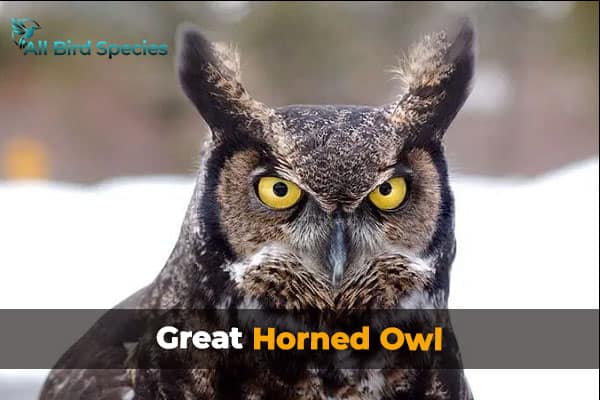
This owl is a night hunter, using its amazing vision and hearing to catch prey. It eats small mammals, birds, and sometimes reptiles. Its varied diet helps it survive in different environments.
The Great Horned Owl likes to nest in old nests or natural spots. It can live in both cities and the countryside, showing how adaptable it is.
| Feature | Details |
|---|---|
| Scientific Name | Bubo virginianus |
| Habitat | Forests, grasslands, urban areas |
| Behavior | Nocturnal, ambush predator |
| Diet | Small mammals, birds, reptiles |
| Nesting Sites | Abandoned nests and natural cavities |
2. American Barn Owl
- Scientific name – Tyto furcata
- Lifespan – 10 years (average)
- Size – 34 to 38 cm
- Weight – 400 to 600 g
- Wingspan – 29 to 36 cm
The American Barn Owl is known for its unique look and interesting behaviors. Learning how to spot this owl and understand its nesting ways can deepen your respect for these amazing birds.
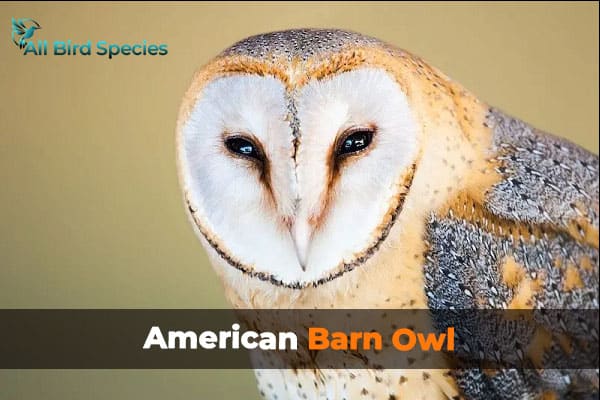
Nesting Habits
The American Barn Owl breeds from March to June. They usually mate for life and pick nesting spots with good cavities. These can be old buildings or tree hollows.
During courtship, the male shows off to attract a female. They then pick a nesting spot together. The nests are made from materials found nearby. They eat small mammals like voles and shrews, helping to keep ecosystems balanced.
Owls in other Regions:
3. Barred Owl
- Scientific name – Strix varia
- Lifespan – 26 years (maximum recorded)
- Size – (43 to 50 cm)
- Weight – (470 to 1050 g)
- Wingspan – (99 to 110 cm)
The Barred Owls of Wisconsin (Strix varia) is a well-known owl in North America. It has physical characteristics like dark eyes and rich brownish-gray feathers with white stripes. These features help it hide in the woods, making it a great hunter.

This owl likes to live in habitats with deep, dark woods and near wetlands. It builds its nests in big trees, looking for places that offer both shelter and food. Its diet includes small mammals, amphibians, and birds, showing how it can live in different places.
The Barred Owl is famous for its call that sounds like “who cooks for you.” Birdwatchers and nature lovers enjoy seeing this owl in the wild. Knowing about its physical characteristics and habitat makes spotting it even more special.
| Feature | Description |
|---|---|
| Species Name | Strix varia |
| Coloration | Brownish-gray with white stripes |
| Eyes | Dark |
| Preferred Nesting Sites | Large trees in dense forests |
| Main Diet | Small mammals, amphibians, birds |
| Common Call | “Who cooks for you?” |
Related Video:
4. Eastern Screech-Owl
- Scientific name – Megascops asio
- Lifespan – 4 years (average), 14 years (maximum recorded)
- Size – (16 to 25 cm)
- Weight – (121 to 244 g)
- Wingspan – (48 to 61 cm)
The Eastern screech owl is a fascinating species found in eastern North America. It is known for its unique traits and adaptability. These small owls have distinct colors, mainly gray and reddish-brown. These colors help them blend into their surroundings.

They can live in many different places thanks to their adaptability. This makes them interesting to study and observe.
Appearance Variations
The Eastern screech owl stands about 6 to 10 inches tall and has tufted ears. It comes in gray and reddish-brown colors. These colors help it hide in wooded areas.
Hawks In northern Wisconsin, the gray morph is more common. In warmer areas, the reddish-brown morph is more seen. This variety helps them hide and reflects their love for wooded areas.
These owls like to nest in tree cavities, old buildings, or similar places. They choose safe spots to raise their young. They eat insects and small rodents, hunting at night.
Learning about the Eastern Screech-Owl’s looks and where it lives helps us understand how it survives and its role in nature.
5. Northern Saw-whet Owl
- Scientific name – Asio otus
- Lifespan – 27 years (maximum recorded)
- Size – (35 to 40 cm)
- Weight – (220 to 435 g)
- Wingspan – (90 to 100 cm)
The Northern Saw-whet Owl is the smallest owl in Wisconsin. It stands about 7 inches tall. Its size makes it hard to see. It has dark brown feathers that help it hide in the forest.
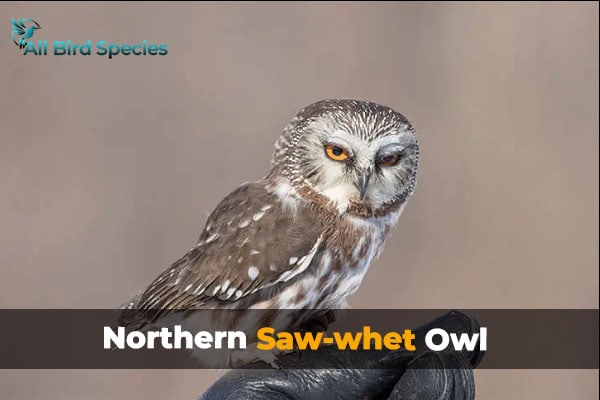
This owl is mostly active at night. Plus, It has amazing behaviors for hunting in the dark. It can hear even the quietest sounds like a deer mouse moving.
It flies silently and catches its prey by surprise. This makes hunting very successful for it.
Seeing a Northern Saw-whet Owl is rare because of its behaviors. But, if you go to its home during the right time, you might see one.
| Characteristic | Description |
|---|---|
| Size | About 7 inches tall |
| Coloration | Dark brown mottled feathers |
| Diet | Small rodents, particularly deer mice |
| Habitat | Forests, predominantly coniferous or mixed woods |
| Activity | Nocturnal |
Rarer Owl Species in Wisconsin
Wisconsin is home to some rare owls that wildlife lovers find fascinating. The Short-eared Owl and Snowy Owl stand out, thanks to their unique looks and habits. They show up in different seasons or in certain places.
6. Short-eared Owl
- Scientific name – Asio flammeus
- Lifespan – 4 years (average), 12 years (maximum recorded)
- Size – (34 to 43 cm)
- Weight – (206 to 475 g)
- Wingspan – (85 to 103 cm)
The Short-eared Owl has a round face and short ear tufts. You’ll find them in open areas like grasslands and marshes. They like to nest in places with lots of plants, keeping them safe and hidden.
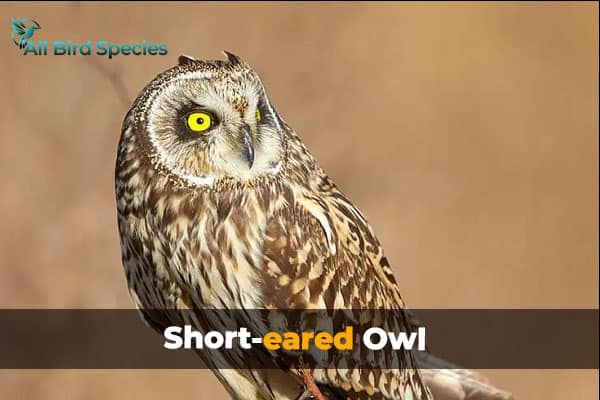
They are most active at dawn and dusk, hunting in the twilight. This makes them a sight to see for those who love nature.
7. Snowy Owl
- Scientific name – Bubo scandiacus
- Lifespan – 10 years (average), 24 years (maximum recorded)
- Size – (52 to 71 cm)
- Weight – (1600 to 2950 g)
- Wingspan – (126 to 145 cm)
The Snowy Owl is known for its white feathers and bright yellow eyes. It sometimes comes to Wisconsin in the winter. These owls live in the Arctic but come south to find food.
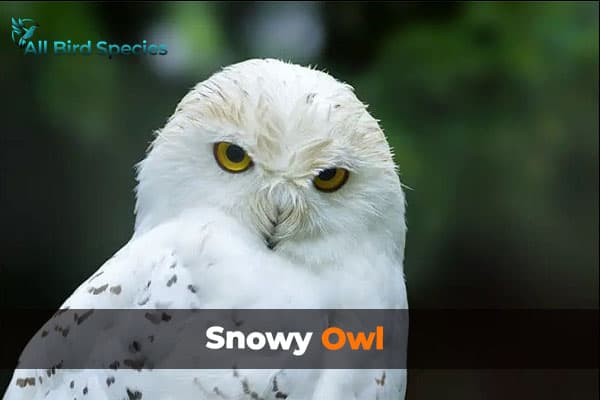
They eat small mammals, like lemmings, which help the local ecosystem. Seeing a Snowy Owl is a rare treat for nature lovers.
Owls in Wisconsin: Behavioral Patterns
Owls in Wisconsin show us how they survive in their environment. Each type has its own way of adapting. For example, some can hunt silently thanks to their great hearing and night vision.
When it comes to where they live, owls have different choices. They often pick hidden spots like tree holes, old buildings, or the ground. This depends on how they hunt and what they eat.
Owls talk to each other using different sounds. These sounds help them mark their territory and find a mate. Learning these sounds can make birdwatching more exciting and help you spot owls in Wisconsin.
Why Wisconsin is a Haven for Owls
Wisconsin is perfect for many owl species because of its climate and biodiversity. The state has forests, wetlands, and farmland. These places meet the needs of these amazing birds.
Here are some reasons why owls love Wisconsin:
- There’s plenty of food for them, like small animals and bugs.
- The forests and natural spots are great for nesting and raising their young.
- Some areas are not too crowded, giving owls quiet places to hunt and nest.
When you visit Wisconsin, look for the owls in their natural habitat. The mix of nature and good conditions makes it a key place for these birds.
Check Our Previous Articles:
| Ducks in Michigan |
| Herons in Florida |
| Hawks in Virginia |
| Hawks in Pennsylvania |
| Birds of the African Savanna |
Wrapping Up…
Wisconsin owls are a key part of the state’s wildlife. They show off unique looks and ways of living. They also help keep the environment balanced.
It’s crucial to protect their homes because they face threats from humans. Local people and visitors can help by supporting conservation efforts. You can help by volunteering or joining owl-watching events.


